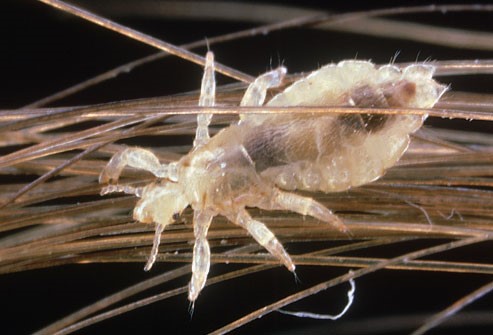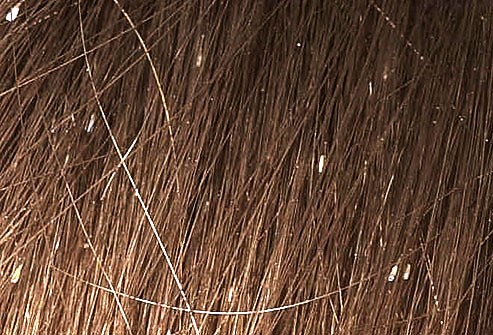Lice in hair is a very common occurrence especially in children. Many schools do lice checks and will always inform you if your children have lice, but you should also check them yourself to confirm the presence of lice. This article will detail how to check for lice, as well as symptoms and treatment.
What Are Head Lice and Nits?
Head Lice are small brown/grey insect about the size of a sesame seed, which cling onto hairs, but always stay close to the scalp as this is what they feed on. Head lice also lay eggs which take around a week to ten days to hatch, and a further ten days for newly hatched louse to grow into adults and begin laying eggs of their own.
Nits are what’s left behind when head lice hatch, they are small, white empty eggshells which look similarly to dandruff, but stick to the hair much more, meaning they are far more difficult to brush out of your hair than dandruff.


How to Check for Lice
Step 1: Look for Signs/Symptoms of Head Lice
First of all, one should first learn the symptoms of having head lice, so you are able to spot any warning signs. One or more of the following symptoms may be apparent when head lice are present:
- Tickling sensation on the scalp.
- A feeling as though something is moving in the hair.
- Itching sensation caused by an allergic reaction to the lice bites, especially on the back of the head and/or ears.
- Sores on the scalp caused by excessive scratching.
- Trouble sleeping, as lice become more active when it is dark.
Step 2: How to Look for Lice, Stage One (Dry Hair)
- Inspect the scalp: Part the hair in numerous places and look for sores or rashes, paying special attention to the back of the neck and ears.
- Look for movement: Lice are difficult to spot, but you may be able to notice movement in the hair.
- Try to spot nits: Look for small white/yellowish sacs, shaped like teardrops. They will be attached to the hair close to the scalp within a quarter-inch.
- Remember that it is easy to confuse nits with dandruff or hair products residue as they look similar. The main difference is that nits stick to the hair, whereas dandruff and hair product flakes are easy to brush out.
- If you find nits, it is also important to ascertain whether they are still alive. If they are more than a quarter inch from the scalp then they have likely already hatched, and your child may no longer be infested. Only nits which are close to the scalp, or lice, are evidence of an existing infestation.
Step 3: How to Look for Lice, Stage Two (Wet Hair)
If you are unable to tell whether lice are present using the above method, then you can learn how to check for lice using the method below, via the use of a lice or flea comb.
- First, wet the hair.
- Next, add a good amount of conditioner to the hair.Using an appropriate comb, comb the hair from the scalp (roots) to the end.
- If lice are present in the hair, they should be visible on the lice/flea comb.If you find that lice are present, then you should also check everyone in your household. Everyone should receive treatment to ensure that you rid your family of the lice infestation.
How to Treat Head Lice
If you choose to use a product, then follow the directions that come with the product. Ensure to not use conditioner prior to applying the treatment as this can make it ineffective.
1.Pick a Lice Killer
- Your fingers can be used to squash the lice.
- Mayonnaise can kill lice (but not nits) when smeared all over the scalp. Cover the head with a shower cap or something similar, and leave it for 36 hours.
- Shampoos which contain the ingredient pyrethrin work to kill both the lice and nits when applied to the scalp.
- Neem oil, or shampoos which contain neem oil can also be effective, but it has to be left on the scalp for 20 to 30 minutes.
2. Pick Out the Nits After Finishing the Topical Treatment
This should be done either outside or in a bath tub. Wet your hair and then comb it using a fine-tooth comb, ensuring to remove all nits which are within a quarter inch of the scalp.
3. If you decide to use no specified treatment methods which kill the nits, then you will likely have to repeat the process of wetting and combing your hair to remove the nits for around nine days.
4. Repeat the treatment around a week to 9 days after the initial treatment, to eradicate any lice which may have survived the initial treatment.
When learning how to check for lice, remember that shaving the head or cutting it short will make this process much easier, although this may not be a highly desirable option for some, and checking for lice in long hair isn’t too difficult when following the guides above.
